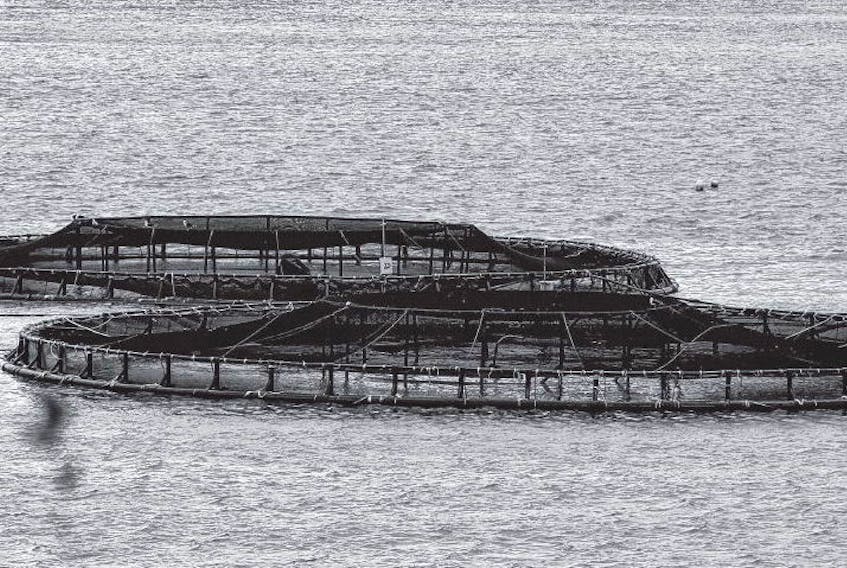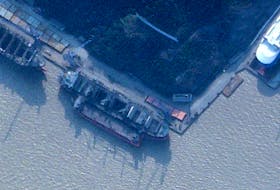The federal government has not adequately managed risks associated with salmon farming, putting wild species in danger, says Canada’s environment commissioner.
Salmon aquaculture is a $1-billion industry in Canada, which is the fourth largest producer of farmed salmon in the world.
A new report produced by Julie Gelfand, Canada’s commissioner of the environment and sustainable development, found that the Department of Fisheries and Oceans has no national standard for nets and other equipment to prevent escapes, nor has it set limits on the amount of drugs and pesticides fish farms can use to treat diseases.
Gelfand’s office found the department had not completed risk assessments for key known diseases, was not addressing new and emerging diseases, was not adequately enforcing regulations aimed at minimizing harm to wild fish and, most importantly according to Gelfand, was not monitoring the health of wild fish.
She also said the DFO is providing more funding for research related to fish farms than funding for research to help monitor their impact.
“The department is at risk of being seen to be promoting aquaculture over the protection of wild fish,” Gelfand told reporters.
Fisheries and Oceans Canada is the federal body responsible for regulating aquaculture and determining where salmon farms can be located or expanded as well as their operating conditions, while the Canadian Food Inspection Agency is responsible for preventing the spread of infectious diseases that can affect farmed and wild fish. In the Atlantic provinces, provincial governments are responsible for most aspects of aquaculture management, the report says.
The report notes that net pen aquaculture is popular as it is more cost and energy efficient
than closed-containment systems, which have the advantage of limiting interactions with wild species.
But net pen aquaculture comes with risks to wild populations such as disease, interbreeding and pesticide contamination.
Escapes can negatively affect wild salmon stocks by interbreeding with wild salmon of the same species, which may weaken the ability of the wild salmon to avoid predators and forage for food, the report says, and escaped fish may also spread disease and compete with wild fish for food.
In 2015, 40,000 farmed salmon were reported to have escaped in Atlantic Canada.
And even when escapes don’t occur, diseases like sea lice spread rapidly in net pens where fish are in close quarters, and juvenile wild salmon that migrate close to these net pens can then be infected, making them more vulnerable to disease and predators Gelfand’s office also found that the federal government did not define limits on the amount of drugs or pesticides that could be deposited to treat diseases, nor did it confirm the accuracy of information self-reported by aquaculture companies.
Moreover, the department did not require companies to monitor the ocean floor under net pens after they had deposited drugs or pesticides to determine whether fish, including lobsters, were harmed.
Bernie Berry, president of the Yarmouth-based Coldwater Lobster Association, said his main concern is cross-contamination from pesticides and drugs used to mitigate diseases like sea lice.
“It’s (happening) in the same water column as lobsters are, and if there’s ever a lobster that is tested, for example, that has some type of a pesticide in it, in today’s world that news spreads so quickly worldwide you could completely annihilate the lobster market overnight.”
Chelsey Karbowski, sustainable fisheries co-ordinator with the Ecology Action Centre, said she hopes Gelfand’s report will be an incentive for the department to further evaluate and monitor the effects of open net pen salmon farming.
“Within Nova Scotia we have had aquaculture for some years now, (but) we don’t have a baseline to understand, really, the impacts prior to the introduction of aquaculture,” she said.
“Because we don’t have that baseline it’s really important that we be very diligent in monitoring now.”
Karbowski said implementing Tuesday’s report recommendations are a good start, but in the long term government needs to examine if net pen salmon aquaculture is sustainable for the ecosystem. Gelfand’s report points out that several wild salmonstocks are currently classified as endangered on both the Atlantic and Pacific coasts.
“We need to look at what other alternatives can we consider,” she said. “Land-based farms have proven to be better for the environment and have been sustainable, so we need to have more discussions around that.”
Gelfand’s report made eight recommendations to the federal government on better practices for salmon farm management and better awareness of the risks. The federal government has agreed to all recommendations and outlined a number points of action.
Susan Farquharson, executive director of the Atlantic Canada Fish Farmers Association, said in an emailed statement that the report does not fully take into account the role that provincial governments play in regulating the salmon farming industry in Atlantic Canada.
“The provincial regulations work well,” she said. “Our farmers adhere to rigorous environmental regulations, policies and codes of practice developed by the government, scientists and industry.”
Fisheries Minister Dominic LeBlanc told reporters that some of the challenges are due to the different jurisdictional roles of Ottawa and the provinces.
“We’re wide open to looking with our provincial partners at what is the appropriate structure, and how can we ensure that public confidence reaches the level it has to for these industries to operate. And if delineating those jurisdictions is part of the solution, we’re again open to looking at how that can be done,” he said.
“I don’t think there should be any confusion that our government’s primary responsibility is to regulate in a safe way all of these activities and to ensure that there’s no harmful interaction with wild salmon populations or other species.”









